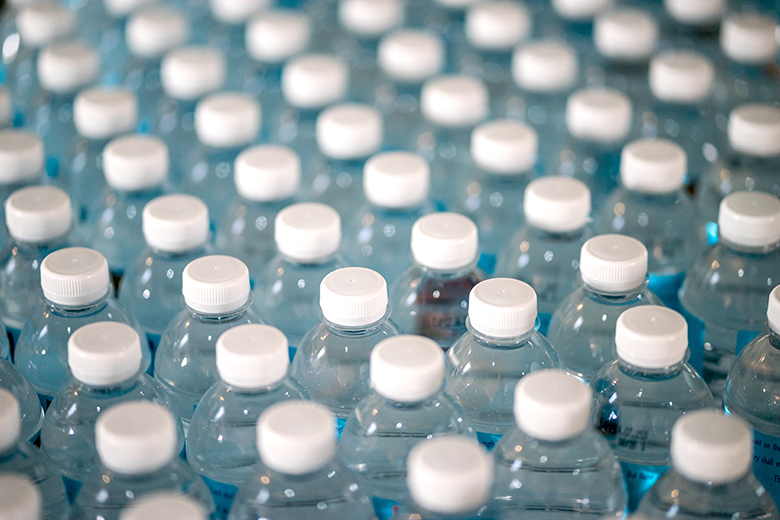
This post originally appeared on FoodPrint and is reprinted with permission.
If you ever find yourself clutching a food container while debating between your trash, compost and recycling containers, then you’re not alone. Recycling is full of stumpers! We talked with recycling experts, got their advice, and are here to make recycling easier.
Each Recycling Facility is Different
The first thing to know about recycling is that every municipality is different, so what is recyclable in San Francisco might not be in Atlanta. New York City and Chicago, for example, have facilities that use optical scanners, magnets and gusts of air to separate recyclables. These procedures remove most of the burden of sorting recyclables from residents, and they catch a lot of recyclers’ whoopsies.
Not all municipalities have recycling technologies that are as advanced, so it’s important to read up on exactly what you can recycle and how you should prepare it. For instance, can you recycle plastic bottle tops where you live? (The answer is yes in most places, but the bottle cap should be screwed on.) Louise Bruce, an industry consultant and former senior program manager of NYC Organics at the NYC Department of Sanitation, says the first thing to do when moving to a new town is look up their municipal recycling guidelines. But we understand if you want to unpack first.
Think Hard About Where Recycled Plastic Ends Up
Most consumers believe their job is done once they’ve landed their recyclables in the blue bin. And while it’s true that you have done a great thing by ensuring that your hummus container didn’t go to the landfill, remember that the life cycle of plastic continues once it’s left for the recycling facility. After being sorted from other recyclables, that container is purchased by another facility that processes it then sells the recycled plastic to industries for further use. But producers don’t necessarily buy recycled plastic.
There’s actually an ongoing surplus of recycled plastic, because there isn’t a very big market for it. This is especially problematic now that China has drastically reduced the number of recyclables they’re accepting from the U.S., whereas previously they had been importing 40 percent of our recycled waste. It remains to be seen how the U.S. will deal with all of this plastic that we can no longer export.
The situation underscores the importance of reducing the amount of waste we produce and building demand for products containing recycled materials. Eadaoin Quinn, director of business development and procurement at ESF-plastics Inc., says that if consumers seek out items that were produced using recycled plastics, it will increase the demand for the resources, but right now the hard truth is that there’s not much of a home for recycled plastic material, especially not in the food sector.
Food Packaging Is Probably Not Made with Recycled Plastic
With few exceptions, like some milk jugs and some water bottles, the plastics that are in contact with your foods (wrapping it, containing it, etc.) are likely virgin, or not recycled, plastic. The reason for this is that in order to use recycled plastic in food packaging, manufacturers need to get approval from the FDA, and that’s both time consuming and expensive, so most food companies don’t bother. When buying packaged foods, look for the fine print that says the packaging uses recycled materials, and pressure companies to both use reused packaging and then prominently label it. Better yet: Try to avoid packaged goods when you can using these helpful tips.
You Don’t Have to Wash out Your Recyclables
It turns out that the peanut butter jar you’ve been agonizing over does not need to be scrubbed to glistening perfection. The industry standard is now “scraped” clean rather than rinsed or washed. Keep in mind that recyclers are concerned about saving water as much as with the need to reuse materials. The key is to make sure that peanut butter oil won’t spill out and contaminate paper materials, which means a quick knife scrape will do just fine. If you do have some oil left in the bottom of a container, just wipe it out and you’re good to recycle. You’re welcome. And if you’re excited to continue decreasing your water use, here are some more helpful ways to save water in the kitchen.
That Pizza Box Tho
The pizza box is where the scraped clean method falls short. The grease on that veggie supreme you got delivered will make a previously recyclable box unrecyclable, since the oils permeate the cardboard material. This becomes a judgement call, but often you can salvage the clean cardboard by cutting it off from the part that’s soiled and landfill-bound.
Don’t Sweat the Small Stuff
Real talk: If you’re a diehard recycler who follows every rule to the tee, please don’t stop what you’re doing. But if you’re like the rest of us and you throw out something stinky from the fridge in its container now and again, it’s a forgivable offense. (If you need help wasting less food, we’ve got you covered there, too.) And if you’re less likely to recycle because of the little things, fear not, a tiny bit of contamination isn’t the end of the world. The most important takeaway here is to recycle as much as you can.


